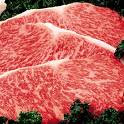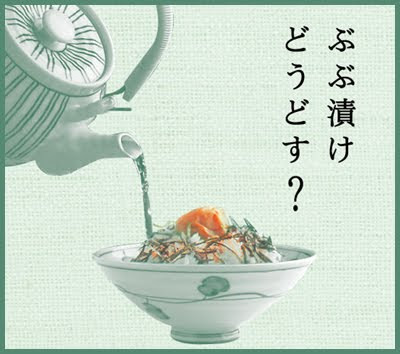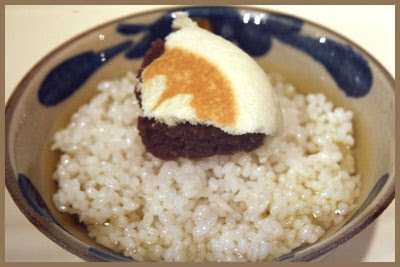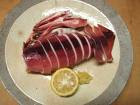[ . BACK to WORLDKIGO TOP . ]
::::::::::::::::::::::::::::::::::::::::::::::::::::::::::::::::::::::::::::::::::::::::::::::::::::
Kyoto, the Old Capital of Japan

Kyoto (京都 Kyōto, Kyooto, Kioto) is a city in the central part of the island of Honshū, Japan. It has a population close to 1.5 million. Formerly the imperial capital of Japan, it is now the capital of Kyoto Prefecture, as well as a major part of the Osaka-Kobe-Kyoto metropolitan area.
Heian-kyō (平安京 "tranquility and peace capital"), became the seat of Japan's imperial court in 794, beginning the Heian period of Japanese history. In Japanese, the city has been called Kyo (京), Miyako (Miako) (都) or Kyo no Miyako (京の都). Keishi (京師), meaning "metropolis".
© More in the WIKIPEDIA !
Nishiki Food Market 京都錦市場
 quote
quote
..... And though it’s certainly not Japan’s largest or flashiest food market, the things you’ll find here—from just-harvested, flame-orange locally grown carrots, to eels arranged, pretty as necklaces, on their beds of ice, to woven baskets abrim with fresh chestnuts—really do represent the best, the freshest, of Kyoto’s culinary offerings.
Most of the 126 stalls sell just one thing: grilled squid, or omelets, or sugared fruit, or rice balls. It’s the perfect place to come to find a cheap meal or a snack, or just to witness the quality and care with which the Japanese treat even the most ordinary, the most humble, objects of life. After all, that attention to detail and presentation is, as much as the food itself, what makes Japan the place it is.
source : Hanaya Yanagihara
::::::::::::::::::::::::::::::::::::::::::::::::::::::::::::::::::::::::::::::::::::::::::::::::::::
Kaiseki Meal, Kaiseki Ryori 懐石料理
kaiseki ryoori
This meal, written like "a hot stone carried in your robe to keep the belly warm", started off as a small meal before the tea ceremony, consisting of one soup dish and three vegetable dishes. The meaning was to keep the stomach and breast warm, to carry over the hunger until the real meal was served.
The meal was served warm, a way to "show" that the kitchen was close by, the host was a poor and humble man.
It then evolved into one of the most elaborate food preparation of Japan, written with the meaning "to meet and sit down" 会席料理, as did the feudal lords with their entourage. These meals were served cold, since the host was rich and had a large estate, with the kitchen in a different section of the manor.
Its arrangements on special seasonal dishes are a feast for the eye. The daimyo had access to all kinds of food, from fresh fish to animals of the forest and could serve expensive tidbids.


:::::::::::::::::::::::::::::::::::::::::::
Order of the dishes served
Originally, kaiseki comprised a bowl of miso soup and three side dishes. It has since evolved to include an appetizer, sashimi, a simmered dish, a grilled dish, and a steamed course, in addition to other dishes at the discretion of the chef.
Sakizuke: an appetizer similar to the French amuse-gueule.
Hassun: the second course, which sets the seasonal theme. Typically one kind of sushi and several smaller side dishes.
Mukozuke: a sliced dish of seasonal sashimi.
Takiawase: vegetables served with meat, fish or tofu; the ingredients are simmered separately.
Futamono: a "lidded dish"; typically a soup.
Yakimono: Broiled seasonal fish.
Su-zakana: a small dish used to clean the palate, such as vegetables in vinegar.
Hiyashi-bachi: served only in summer; chilled, lightly-cooked vegetables.
Naka-choko: another palate-cleanser; may be a light, acidic soup.
Shiizakana: a substantial dish, such as a hot pot.
Gohan: a rice dish made with seasonal ingredients.
Ko no mono: seasonal pickled vegetables.
Tome-wan: a miso-based or vegetable soup served with rice.
Mizumono: a seasonal dessert; may be fruit, confection, ice cream, or cake.
© More in the WIKIPEDIA !
ainame to tamagodofu no haru-wan ...Frühlingsschale mit Eierstich und Fisch
haru no sakizuke ...Kleines Frühlingsgericht
::::::::::::::::::::::::::::::::::::::::::::
Hassun 八寸
contains three different tastes:
from the mountains, yama no mono 山のもの
from the field, no no mono 野のもの
from the sea, umi no mono 海のもの
. . . CLICK here for Photos !
kaiseki 会席料理
This is a more informal banquet-type meal served in Kyoto restaurants together with ricewine, whilst the
kaiseki 懐石料理 is served with tea.
kappoo ryoori 割烹料理 kappo food
Kappoo, Kappo, a simpler style of Kaiseki Food
obansai / obanzai おばんさい / お晩彩 /御晩菜
home-cooking of vegetables and small dishes from Kyoto
originall writen お番采 ("vegetables on duty", normal vegetable)
Kyoo no obansai 京のおばんさい / 京のおばんざい obanzai
lit. like this お晩彩 "colors for the evening"

traditional home-style cuisine
It has all the flavor of vegetarian temple cuisine, imperial court cuisine, tea ceremony kaiseki cuisine and more of the refinement of Kyoto cooking.
Most dishes are made from vegetables.

It was also called "Omawari おまわり" already since the court cooking of the Heian period, when one dish of rice was surrounded by up to six small plates with side dishes.
Another word is "Ozayoo" お雑用 "variuos things" or
mainichi no okazu 毎日のおかず food of every day
Many old homes keep a yearly diary, called
"saichuu oboe" 歳中覚, where the various dishes for special days are recorded since more than 200 years and passed on to the housewife by her mother in law.
Not a bit of any vegetable is wasted and left-over food has to be rearranged to a delicious
obanzai on the next day.
Now ther is even Kaiseki Obanzai おばんざい懐石 and Obanzai Baikingu おばんざいバイキング (self-service) restaurants.
. . . CLICK here for Photos !
Reference : Kyoto Obansai
Reference : Kyoto Obanzai
Nanzenji no toofu ryoori 南禅寺の豆腐料理
Vegetarian and tofu dishes from temple Nanzenji
:::::::::::::::::::::::::::::::::::::::::::::::::::::::::::::::::::::::::::::::::::::::::::::::::::::
For Kyoto, the
fresh drinking water was essential and supported the many tea houses and tea masters and also the shops making sweets and kaiseki and other food.
KIYOMIZU 清水 and fresh drinking water
Trinkwasser
みたらしだんご mitarashi dango, dumplings with sauce
from Shimogamo Shrine, with special well water
Well near the Sweet Shop Kameya Yoshinaga
Samega-i 醒ケ井 "Wake-up well"
Reference : "Samegai Well"
. . . CLICK here for Photos !
:::::::::::::::::::::::::::::::::::::::::::::::::::::::::::::::::::::::::::::::::::::::::::::::::::::
Other dishes from Kyoto
Kyooyasai, kyoyasai, kyosai 京野菜 / 京菜 Vegetables from Kyoto.
Gemüse aus Kyoto, Kyoto-Gemüse, Kyoo-yasai
Kujoonegi, Kujoo negi, Kujonegi 九条葱(くじょうねぎ)
leek from Kujo in Kyoto
Kamonasu no dengaku 賀茂なすの田楽
round eggplants with miso paste, served on the "riverbed restaurants" 川床 kawadoko, dining decks on the river Kamogawa. A custom since the 16th century in summer.
. . . CLICK here for Photos !
Reference : Kawadoko Dining in Kyoto
. . . . . also
kawadoko ryoori 川床料理
near shrine Kibune Jinja 貴船神社 served in the forest restaurants along the clean river.
. . . CLICK here for Photos ! 貴船の川床料理
. kawayuka 川床(かわゆか)riverbed veranda and more related
KIGO
Kyoo tsukemono 京漬物 pickles from Kyoto
see below, senmaizuke, shibazuke.
furofuki daikon ふろふきだいこん boiled radish with kombu and a bit of yuzu
with radish from Temple Shogo-In 聖護院
mizuna to oage no taitan みず菜とおあげの炊いたん boiled vegetables and
mizuna leaves
:::::::::::::::::::::::::::::::::::::::::::::::::::::::::::::::::::::::::::::::::::::::::::::::::::::
Lake Biwa, (Biwako 琵琶湖)
and its Fish Cuisine 琵琶湖料理
burakku basu ryoori ブラックバス 料理 dishes with black bass
large-mouth bass Micropterus salmoides
. . . CLICK here for Photos !
There are a lot in
Lake Biwa (Biwako 琵琶湖) , from collectors who did not want to keep them any more, and they do a lot of damage to the lake ecology. Many say they are not tasty. But as tempura, they are now a cheap hit.
basu tenpura バス天ぷら Udon with black bass tempura
ブラックバス天ぷら
burakku basu don ブラックバス丼 tempura on rice
. . . CLICK here for Photos !
Recently the biodiversity of the lake has suffered greatly due to the invasion of foreign fish, the black bass and the bluegill. Bluegill were presented to the Emperor and later freed in the lake as a food source for other fish. Black bass were introduced as a sport fish.
© More in the WIKIPEDIA !
Schwarzer Barsch, Grossmaul-Barsch
isaza 魦 いさざ Lake Biwa goby, Chaenogobius isaza
Grundelart, der Isaza
isaza nabe いさざ鍋 hodgepodge
isaza to harusame no su no mono いさざと春雨の酢のもの with harusame noodles and vinegar
isaza to ebi no gomoku age いさざとえびの五目揚げ fried with small shrimp
isaza no nimono いさざの煮物 simmered goby
ko-ayu no tenpura こあゆの天ぷら tempura from small sweetfish
ko-ayu no amazu-ni こあゆの甘酢煮 small sweetfish simmered in sweet vinegar
ko-ebi no age-ni 小えびの揚げ煮 fried and simmered small shrimp
sujiebi, suji-ebi 藻えび / mo-ebi もえび (藻蝦)
middle-shrimp, Metapenaeus intermedius
suji-ebi no kaki-age すじえぴのかき揚げ fried suji shrimp
suji-ebi iri poteto kurokke すじえび入りポテトコロッケ potato croquettes with suji shrimp
. . . CLICK here for suji ebi Photos !
kani, kaki, buri ryoori カニ、カキ、ブリ料理
Fish and Seafood dishes in Winter
They come mostly from the Sea of Japan, like Echizen crabs and oysters and yellowtail.
Lake Biwa, Japan's largest lake, is located at the center of this prefecture:
WASHOKU
Shiga Prefecture - Regional Dishes
:::::::::::::::::::::::::::::::::::::::::::::::::::::::::::::::::::::::::::::::::::::::::::::::::::::
amadai あまだい sweet tai tilefish
Lopholatilus chamealeonticeps
azukimeshi, azuki-meshi 小豆飯 rice with red adzuki beans
Cooked on auspicious occasions for the birth of a child, first day of school and so on. The type Dainagon Azuki from Tanba is used. Rice is partly normal rice, partly mochigome soft rice, and a bit of salt is used for the flavor.
dainagon azuki 大納言あずき
barazushi, bara sushi ばらずし
Barazushi
a kind of chirashizushi
It is made mostly with
kanbutsu dried ingredients, some local vegetables and boiled shrimp for some red color. Slices of fried egg for yellow.
Prepared for festivals,especially the Doll Festival on March 3.
. . . CLICK here for Photos !
bubuzuke ぶぶづけ/ ぶぶ漬け ochazuke from Kyoto お茶漬け
chirimen sanshoo ちりめん山椒 boiled small fish with Japanese pepper
chirimenjako ちりめんじゃこ【縮緬雑魚】 are small salted boiled fish babies.
Together you have the bounty of the sea and of the mountains (umi no sachi / yama no sachi). It tasts nice on white rice.
detchi yookan でっち羊羹 / 丁稚(でっち)ようかん sweet bean jelly
also eaten in Shiga.
Ekijuutoo Ekijuto 益寿糖 "Sugar for a longer life"
Gion doofu 祇園豆腐 Gion Tofu the Niken Chaya Shop 二軒茶屋
fujizushi, fuji sushi 藤寿司 (ふじすし)"wisteria sushi"
sushi with black beans. Black beans from Tanba 丹波黒大豆 are used for this festive sushi. The rice is cooked with the boiling broth of the black beans and thus becomes gray. Later vinegar is added and it changes to a bright red-violett (like the flower
fuji wisteria.
funazushi ふなずし fermented funa fish sushi
. . . CLICK here for Photos !
a kind of narezushi, fermented fish and rice
kigo for summer
Fushimi toogarashini, togarashi-ni 伏見とうがらし煮
boiled chillies from Fushimi
Fushimi toogarashi 伏見とうがらし, see Kyoto Vegetables.
Made in summer to get an appetite.
:::::::::::::::::::::::::::::::::::::::::::::::::::::::::::::::::::::::::::::::::::::::::::::::::::::
hamo 鱧 (はも) pike conger pike, pike eel and the Gion Festival
. . . Hamo no kawa 鱧の皮 (はものかわ)skin of the conger pike; pike eel
kigo for summer
Muraenesox cinereus. dragontooth
heshiko へしこ pickled saba mackerel for one year
Saba or iwashi from the Tango Seaside is marinated.
also eaten in Fukui.
hiuo 氷魚 (ひうお) small ayu trout
The "Diamonds of lake Biwa". 琵琶湖のダイヤモンド
They are rather small and have a shiny skin. Served grilled, even the head is grilled while stuck into a net and then all is eaten.
. . . CLICK here for Photos !
honmoroko, hon moroko 本諸子, ホンモロコ, 諸子 (もろこ)
Gnathopogon elongatus
small kind of carp.
It is eaten in Kyoto as a very expensive fish. Now farmers in Tottori are growing it in old rice paddies and sell it to Kyoto.
kigo for all spring
. . . CLICK here for Photos !
:::::::::::::::::::::::::::::::::::::::::::::::::::::::::::::::::::::::::::::::::::::::::::::::::::::
imoboo 芋棒(いもぼう) "potatoes like a stick", long taro
cooked with cod fish.

made from famous taro potatoes "like shrimp" ebi-imo 海老芋 (えびいも), also known as Kyoo imo 京芋(きょういも) potato from Kyoto, imobo, which grow near the temple Toji 東寺. They have been introduced to Kyoto by a prince of the imperial family, Hirano Gondayu 平野権太夫, from Kyushu, first called "taro from China" (too no imo 唐芋(とうのいも), around 1725. Now they are cooked or mixed with potatoes from Hokkaido.
Reference : Imobo Hirano-ya Honten, Kyoto
itokojiru いとこ汁 vegetable miso soup "Nephew soup"
"the soup", shirumono 汁もの
From Nagaoka, with local eggplants, pumpkins and red beans, in miso and soy sauce.
It is especially prepared in the village of Joododani 浄土谷 on the night of Obon (august 13) to welcome the ancestors' souls (o-shoorai san おしょらいさん(精霊)).
The dish is simple but healthy and has been given as schoo lunch too.
The name comes from putting the vegetables in the broth, like 追い追い OI OI, which could alse be spelled 甥、甥, meaning "nephew".
see also
Itokoni いとこ煮、従弟煮 "Boiled Nephews"
from Yamaguchi prefecture
:::::::::::::::::::::::::::::::::::::::::::::::::::::::::::::::::::::::::::::::::::::::::::::::::::::
. Karakki からっキー a mascot for red hot pepper
京都向日市激激辛商店街
kayaku gohan かやく御飯, kayaku meshi かやく飯
a kind of gomoku gohan, eaten in Kansai.
with vegetables, fish and meat.
Kayaku ... 加薬 (かやく) addition or adjuvant
Add medicine to your food.
Kenchinjiru けんちんじる(巻繊汁) vegetable soup
also from temple Kenchoji, Kamakura. けんちん汁
In some areas they put in new vegetables with the left-over broth and heat it up again. This soup is then called KENCHAN けんちゃん.
kinome-ni,kinomeni 木の芽煮 simmered tree buds of sanshoo pepper
Kurama
The leaves and fruit of the Japanese pepper tree are simmered in sweet soy sauce like tsukudani. This mixture is very pungent and can be eaten on top of white rice.
CLICK here for PHOTOS !
kuromameni, kuromame-ni 黒豆煮 boilded black beans with rice
from Tamba beans
Auspicious food for the New Year im memory of winning a battle (kachi ikusa 勝ち戦). Some add boiled chestnuts. Sometimes a rusty nail is added when boiling.
. . . CLICK here for Photos !
Kyoo kurorooru kuromaru 京黒ロール /くろまる
roll cake with black bamboo coal from Arashiyama and namkuriimu cream inside.
. . . CLICK here for Photos !
Minazuki 水無月Kyoto sweets for June
with a layer of red azuki beans
nattoomochi, nattoo mochi 納豆餅(なっとうもち)
From Tango. They are eaten on the three days of the New Year instead of the usual
zooni soup. They are about 15 cm in diameter and round.
Natto fermented soy beans is smeared around the white mochi.
. . . CLICK here for Photos !

nikuman 肉饅頭(にくまんじゅう) steamed bun with meat, and the initials of "old capital"
From Ebisu Rakuan restaurant in Kyoto
nishinnasu, nishin nasu にしんなす herring and eggplants
since Kyoto was far away from the coast, dried fish was used for this dish. A typical summer dish.
. . . CLICK here for Photos !
:::::::::::::::::::::::::::::::::::::::::::::::::::::::::::::::::::::::::::::::::::::::::::::::::::::
sabazushi 鯖寿司 makerel sushi
saba no boozushi さばの棒寿司 long makerel sushi
Saba-Bozushi
pressed sushi made with cured, marinated makerel
Reference
. . . . . guji ぐじ tilefish
Wakasa guji,specialty of the Wakasa peninsula and one of the finest ingredients in Japanese cooking. Salted Wakasa Guji used to be sent to Kyoto via the Mackerel-Road (saba kaido 鯖街道) along with salted mackerels and Wakasa flatfish, as they are important ingredients for Kyoto cuisine.
WASHOKU : makerel road (saba kaidoo 鯖街道、さばかいどう)
:::::::::::::::::::::::::::::::::::::::::::::::::::::::::::::::::::::::::::::::::::::::::::::::::::::
. Saga doofu 嵯峨豆腐 Tofu from Saga, Arashiyama
Tofu shop Morika 森嘉(もりか)
Saikyoo miso 西京味噌 Saikyo miso from western Kyoto
a kind of white miso paste
. . . CLICK here for Photos !
..... also akadashi miso
sasamaki, sasa-maki, chimaki 笹巻き / ちまき
sweets wrapped in a bamboo grass leaf
auspicious food eaten on the Boy's Day in May, the middle day of the year, 11 days after the summer equinox (半夏生(hangeshooはんげしょう). uruchi rice and mochigome rice are blended 7:3 . They are formed to long sticks, four are bound together and steamed.
Reference
sasa, Sasa japonica.
. . . CLICK here for Photos !
During the Gion Festival in July the wrapping only is sold as a talisman. You can tie it to your front door for protection from evil influence and disease for your family.
senmaizuke せんまい漬け / 千枚漬 pickled trunips
"1000 slices"
. . . CLICK here for Photos !
Seta shijimi
corbicula from Seta (瀬田蜆) and the Seta Bridge
Shibazuke しば漬け / 柴漬け
Perilla pickles with eggplant
From Ohara 大原
Shookadoo Bentoo 松花堂弁当 Shokado Bento Lunchbox
Sukiyaki from Mishima Tei すき焼きno 三嶋亭
suppon nabe すっぽんなべ suppon turtle stew
kigo for all winter
Has a tradition of more than 300 years in Kyoto.
Washoku : Nabe Hodgepodge Food
:::::::::::::::::::::::::::::::::::::::::::::::::::::::::::::::::::::::::::::::::::::::::::::::::::::
Taizagani 間人蟹 (たいざがに)
zuwaigani crabs from Taiza port
At the Tango sea of Japan.
This is a small port with only five ships, whidh make the tour every day and bring the fresh crabs to the harbor for sale. They are said to be the best you can get in Kyoto.
The egg of the female are of two types,
sotoko 外子 outer eggs
uchiko 内子 inner eggs
These female crabs are also called KOPPEGANI こっぺがに and the eggs are mixed with rice for a simple but delicious
koppedon こっぺ丼 bowl of rice with one female
Matsuba crab
. . . CLICK here for Photos !
Tanba matsutake 丹波松茸
pine mushrooms from the Tamba region
Tango no barazushi 丹後のばらずし sushi rice with scattered ingredients
(a kind of
gomokukzushi)
for the autumn festival in Tango. Farmers give it away to people who helped them with the harvest. They have a special wooden container to make it (matsubuta sushi まつぶた寿司). It is a very colorful sushi, with sansho Japanese pepper leaves for green, egg for yellow and red pickled ginger.
. . . CLICK here for Photos !
... other types of
barazushi ばら寿司 eaten of festive days.
tochimochi, tochi-mochi 栃もち / とち餅 / とちもち dumplings from horse chestnuts
The chestnuts have to be watered and the bitterness taken off by rinsing them in fresh mountain creeks. They are then mixed with mochigome rice. When fried and some sugar and soy sauce is added, they taste quite nice. It was a food for poor farmers in mountainous regions to make it over the winter months.
Also eaten in Tottori and many other mountainous parts of Japan.
. . . CLICK here for Photos !
WASHOKU : Ujicha, Uji-cha 宇治茶 tea from Uji
The most famous
Uji tea in Kyoto, already used by Sen no Rikyu.
unagi chazuke 鰻茶漬け eel on rice with green Uji tea.
From Ujidahara Village 宇治田原町
uzumidoofu, uzumi tofu, uzumi dofu うずみ豆腐 "tofu burried in rice"
uzumaru 埋まる lit. means to be burried under something.
It can be freshly cooked white rice or rice gruel (kayu) or
mochigome sticky rice.
. . . CLICK here for Photos !
wagashi 和菓子
WASHOKU : KYOTO SWEETS
:::::::::::::::::::::::::::::::::::::::::::::::::::::::::::::::::::::::::::::::::::::::::::::::::::::
Yahata-maki やはたまき (八幡巻き) anago and eel roll with local burdock
Yanaka shooga 谷中生姜 Yanaka stem ginger
yatsuhashi,
nama yatsuhashi 生八ッ橋
Yatsuhashi, Iris Bridge Cake, やつはし 八橋
The name is a reference to the famous Tales of Genji.
Yuba 湯葉/湯波/油皮 soymilk skin
Yudoofu, tofu in boiling water ... 湯豆腐
..... yuyakko 湯奴
kigo for all winter
*****************************
Worldwide use
*****************************
Things found on the way
Reference : Kyoto Kaiseki
Dining in Kyoto
Kyoto Yuka Outdoor Dining
Kyoto Beer Gardens, Halls and Restaurants
source : www.kyotoguide.com
:::::::::::::::::::::::::::::::::::::::::::::::::::::::::::::::::::::::::::::::::::::::::::::::::::::
Kaiseki Food for the Seasons
WKD Library
Find out where (and what) the locals are eating from some longtime residents of Kyoto, both ex pat and Japanese here on
Kyoto Foodie!
source : kyotofoodie.com / Kyoto Foodie!
 Local Kaiseki Boxes from Okayama
*****************************
Local Kaiseki Boxes from Okayama
*****************************
HAIKU
.....
WKD . Edo and Kyoto, Capitals of Japan
"Blossom Capital" flourishing town (
hana no miyako 花の都)
:::::::::::::::::::::::::::::::::::::::::::::::::::::::::::::::::::::::::::::::::::::::::::::::::::::
Haiku about the hio trouts
. Matsuo Basho 松尾芭蕉 - Archives of the WKD .
:::::::::::::::::::::::::::::::::::::::::::::::::::::::::::::::::::::::::::::::::::::::::::::::::::::
氷魚痩せて月の雫と解けぬべし
hio yasete tsuki no shizuku to tokenu beshi
Masaoka Shiki 正岡子規
:::::::::::::::::::::::::::::::::::::::::::::::::::::::::::::::::::::::::::::::::::::::::::::::::::
氷魚くへば瀬瀬の網代木見たきかな
hio kueba sese no ajirogi mitaki kana
Matsuse Seisei 松瀬青々 [1869~1937]
born in Osaka
ajirogui 網代杙(あじろぐい) is a kigo for winter
:::::::::::::::::::::::::::::::::::::::::::::::::::::::::::::::::::::::::::::::::::::::::::::::::::
鮒鮨や彦根の城に雲かかる
funazushi ya Hikone no shiro ni kumo kakaru
crucian carp sushi -
the castle of Hikone
is wrapped in clouds
Yosa Buson 蕪村
:::::::::::::::::::::::::::::::::::::::::::::::::::::::::::::::::::::::::::::::::::::::::::::::::::::
composing haiku -
more difficult than
composing a meal
Gabi Greve
*****************************
Related words
WASHOKU : more about Kyoto dishes
Tenzoo 典座 Tenzo kyokun, the Zen cook teachings
*****
WASHOKU : Regional Japanese Dishes
:::::::::::::::::::::::::::::::::::::::::::::::::::::::::::::::::::::::::::::::::::::::::::::::::::

































